
Chapada dos Veadeiros National Park: A Natural Wonderland in Brazil
Explore the enchanting Chapada dos Veadeiros National Park in Brazil, a UNESCO World Heritage site known for its breathtaking waterfalls, unique rock formations, and rich biodiversity.
Chapada dos Veadeiros National Park is a stunning natural reserve located in the heart of Brazil. It is renowned for its unique landscapes, which feature impressive rock formations, crystal-clear waterfalls, and lush vegetation. The park is a haven for nature lovers and offers a range of activities including hiking, swimming, and wildlife spotting. Established in 1961, Chapada dos Veadeiros National Park is part of the Cerrado, one of the oldest and most diverse ecosystems in the world. The park covers an area of over 240,000 hectares and is a UNESCO World Heritage site. Visitors can marvel at the incredible biodiversity, which includes rare and endangered species such as the maned wolf, giant armadillo, and jaguar. One of the highlights of the park is the spectacular Vale da Lua (Moon Valley), a unique landscape shaped by flowing water over centuries. The park also boasts numerous waterfalls, such as the breathtaking Cachoeira do Segredo and the stunning Catarata dos Couros. Whether you are an avid hiker or simply looking to relax in nature, Chapada dos Veadeiros offers an unforgettable experience.
Local tips in Chapada dos Veadeiros National Park
- Best time to visit is during the dry season from May to September when the trails are more accessible and the waterfalls are at their best.
- Wear sturdy hiking boots and bring plenty of water, as some trails can be challenging and long.
- Hire a local guide to enhance your experience and ensure you don't miss any hidden gems.
- Don't forget to bring insect repellent, as the park is home to many insects, especially during the rainy season.
- Accommodation options in nearby towns like Alto Paraíso de Goiás and São Jorge range from budget hostels to more comfortable lodges.
Chapada dos Veadeiros National Park: A Natural Wonderland in Brazil
Chapada dos Veadeiros National Park is a stunning natural reserve located in the heart of Brazil. It is renowned for its unique landscapes, which feature impressive rock formations, crystal-clear waterfalls, and lush vegetation. The park is a haven for nature lovers and offers a range of activities including hiking, swimming, and wildlife spotting. Established in 1961, Chapada dos Veadeiros National Park is part of the Cerrado, one of the oldest and most diverse ecosystems in the world. The park covers an area of over 240,000 hectares and is a UNESCO World Heritage site. Visitors can marvel at the incredible biodiversity, which includes rare and endangered species such as the maned wolf, giant armadillo, and jaguar. One of the highlights of the park is the spectacular Vale da Lua (Moon Valley), a unique landscape shaped by flowing water over centuries. The park also boasts numerous waterfalls, such as the breathtaking Cachoeira do Segredo and the stunning Catarata dos Couros. Whether you are an avid hiker or simply looking to relax in nature, Chapada dos Veadeiros offers an unforgettable experience.
When is the best time to go to Chapada dos Veadeiros National Park?
Iconic landmarks you can’t miss
Parque Nacional da Chapada dos Veadeiros
Explore the stunning landscapes and rich biodiversity of Parque Nacional da Chapada dos Veadeiros, a Brazilian gem for nature lovers and adventurers.
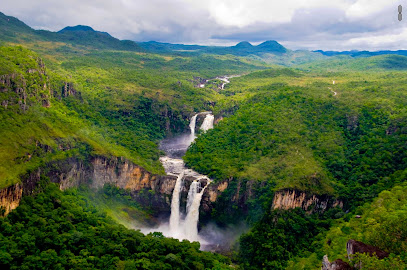
Park entrance
Discover the breathtaking landscapes and diverse wildlife of Chapada dos Veadeiros National Park in Brazil, a true ecological treasure for nature lovers.
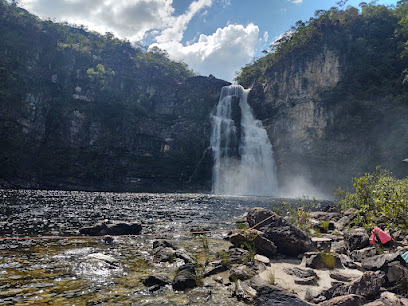
Capital da Chapada dos Veadeiros
Explore the stunning landscapes and rich biodiversity of Capital da Chapada dos Veadeiros, a top tourist attraction in Brazil's Goiás state.
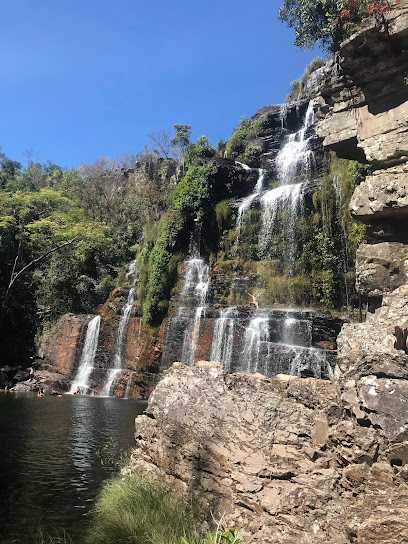
EMAS NATIONAL PARK AND CHAPADA DOS VEADEIROS, BRAZIL
Discover the natural beauty and rich biodiversity of Emas National Park and Chapada dos Veadeiros, Brazil – a paradise for adventurers and nature lovers.
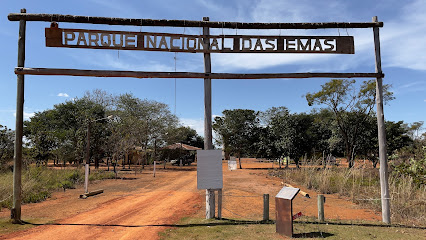
Chapada dos Veadeiros
Explore the breathtaking landscapes, stunning waterfalls, and rich biodiversity of Chapada dos Veadeiros, a UNESCO World Heritage Site in Brazil.

Unmissable attractions to see
Vale da Lua
Experience the captivating beauty of Vale da Lua, a stunning park with unique rock formations and a lunar-like landscape perfect for adventure and relaxation.
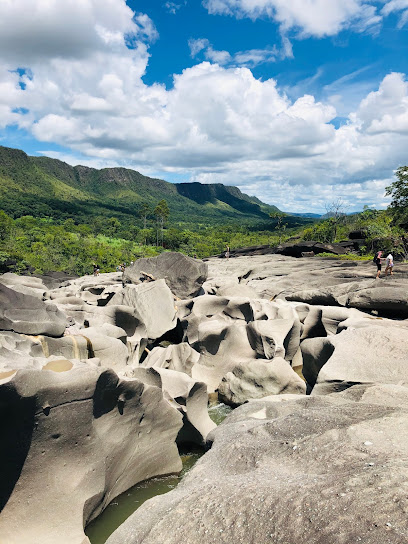
Park entrance
Explore the breathtaking landscapes and rich biodiversity of Chapada dos Veadeiros National Park, a premier destination for eco-tourism in Brazil.
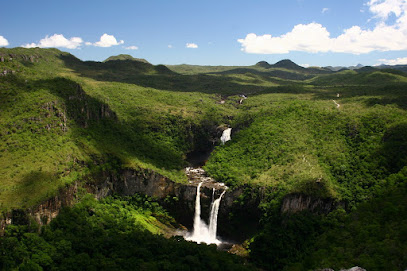
Cachoeira Dos Cristais
Explore the breathtaking beauty of Cachoeira Dos Cristais, a stunning waterfall destination in Goiás, Brazil, perfect for nature lovers and adventure seekers alike.
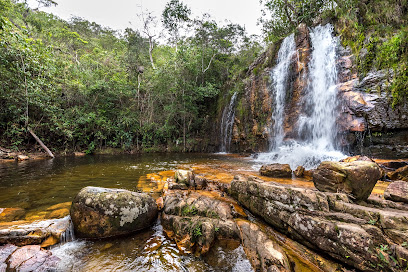
Enchanted Well Waterfall
Explore the breathtaking Enchanted Well Waterfall in Goiás, where nature's beauty and adventure await every visitor seeking tranquility and stunning landscapes.
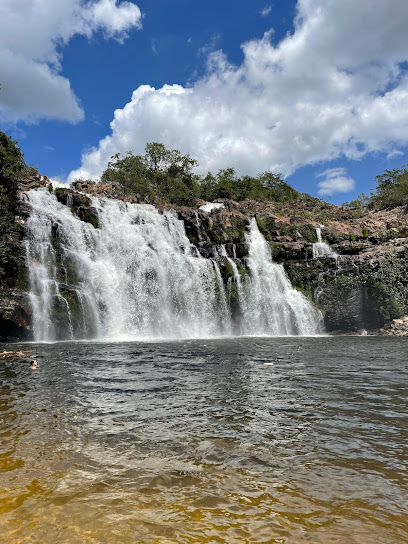
São Bento Waterfall
Explore the stunning São Bento Waterfall in Alto Paraíso de Goiás, a natural wonder offering breathtaking views and serene hiking trails amidst lush landscapes.

Cachoeira Almécegas I
Explore the breathtaking Cachoeira Almécagas I, a stunning waterfall in Alto Paraíso de Goiás, Brazil, surrounded by lush nature and vibrant wildlife.

Almécegas II Waterfall
Experience the breathtaking Alméccegas II Waterfall in Brazil's Chapada dos Veadeiros National Park, a natural paradise for adventure and serenity.

Jardim de Maytrea
Experience the beauty of nature at Jardim de Maytrea, a serene park in Alto Paraíso de Goiás, perfect for relaxation and exploration.

Abyss Waterfall
Experience the breathtaking beauty of Abyss Waterfall in Alto Paraíso de Goiás, a stunning natural wonder surrounded by lush greenery and adventure.
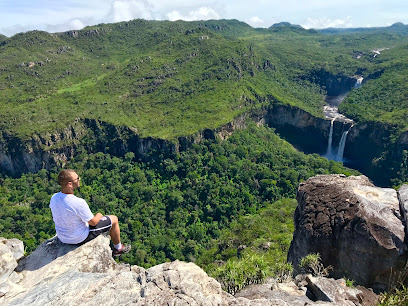
Cachoeira da Muralha
Discover the enchanting beauty of Cachoeira da Muralha, a stunning waterfall and serene getaway in Alto Paraíso de Goiás, Brazil.
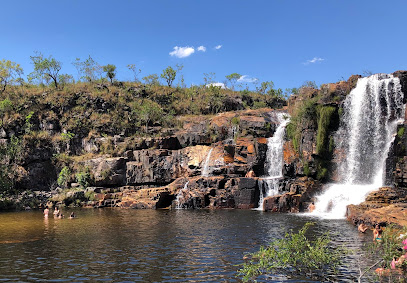
Bar do Mirante
Discover Bar do Mirante, the ultimate cocktail bar in Alto Paraíso de Goiás, offering breathtaking sunset views and a vibrant atmosphere for every traveler.
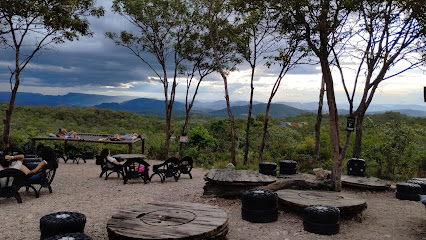
Cachoeira do Segredo
Experience the stunning beauty of Cachoeira do Segredo, a breathtaking waterfall in São Jorge, Goiás, perfect for nature lovers and adventurers.
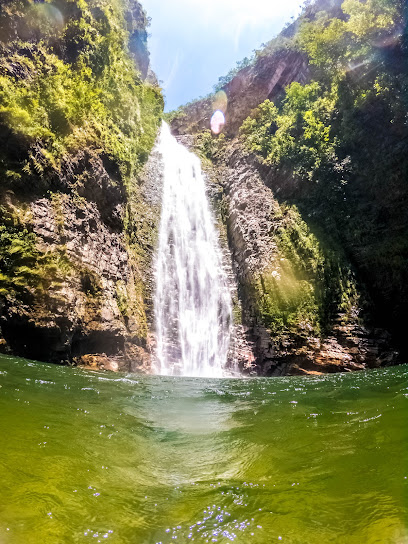
Waterfall Bridal Veil
Discover the breathtaking Bridal Veil Waterfall in Alto Paraíso de Goiás, a stunning natural wonder perfect for adventure and relaxation.
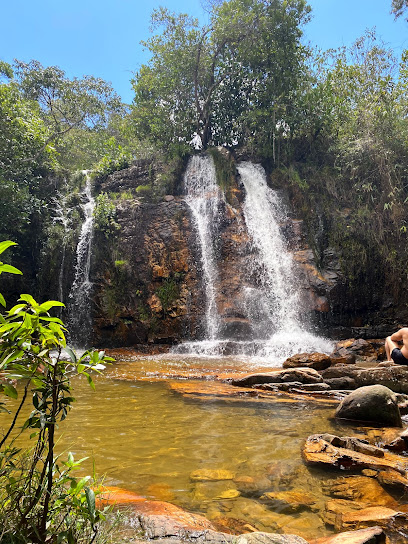
Cachoeira Raizama
Discover the breathtaking beauty of Cachoeira Raizama, a stunning waterfall in Alto Paraíso de Goiás, Brazil, perfect for nature lovers and adventure seekers.
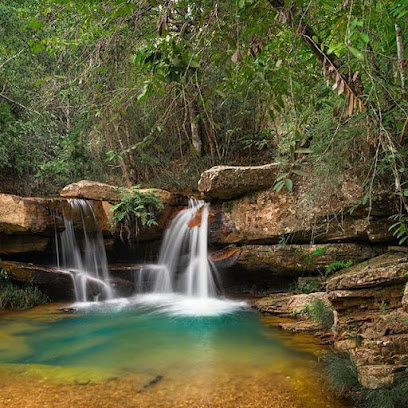
Carioquinhas
Discover the natural beauty of Carioquinhas, a serene park in Goiás, perfect for outdoor adventures and peaceful relaxation amidst lush landscapes.
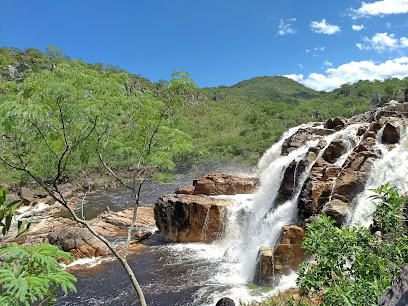
Essential places to dine
Zu's Bistro culinária italiana.
Experience authentic Italian cuisine at Zu's Bistro in Alto Paraíso de Goiás - where every meal feels like a trip to Italy.
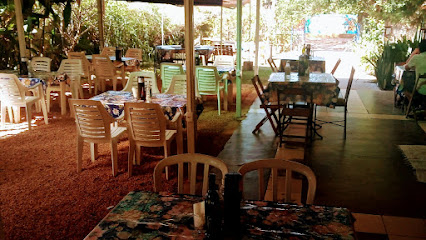
Restaurante Buritis
Experience authentic Brazilian cuisine at Restaurante Buritis in Alto Paraíso de Goiás - a culinary gem celebrating local flavors.
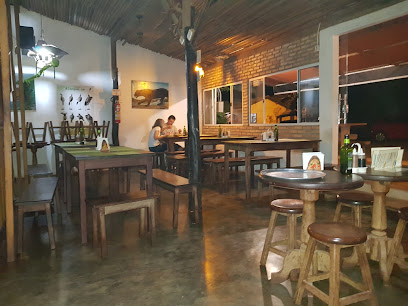
La Parrilla
Discover La Parrilla in Alto Paraíso de Goiás for an authentic Uruguayan dining experience filled with flavor and warmth.
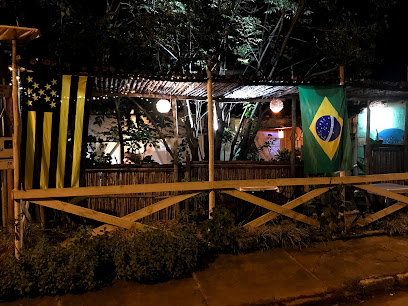
Markets, malls and hidden boutiques
Parque Nacional da Chapada dos Veadeiros
Explore the breathtaking landscapes and rich biodiversity of Parque Nacional da Chapada dos Veadeiros, a UNESCO World Heritage site in Brazil.
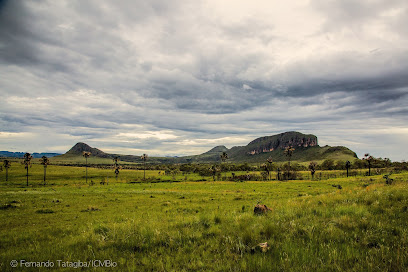
Vale da Lua
Explore the surreal landscapes of Vale da Lua, a captivating park in Goiás known for its unique rock formations and stunning natural beauty.
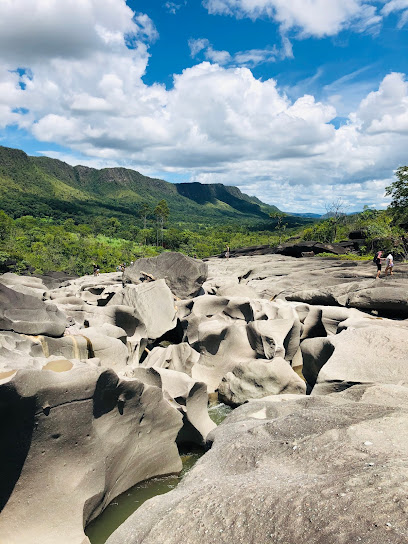
Park entrance
Explore the breathtaking beauty and diverse ecosystems of Chapada dos Veadeiros National Park, a UNESCO World Heritage site in Brazil.
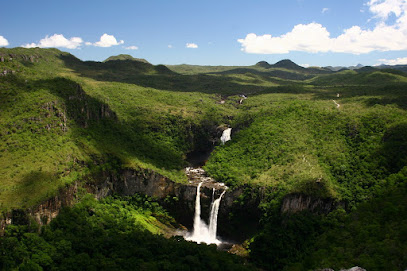
Cachoeira Dos Cristais
Discover the awe-inspiring Cachoeira Dos Cristais, a breathtaking waterfall nestled in the lush landscapes of Goiás, perfect for nature lovers and adventurers.
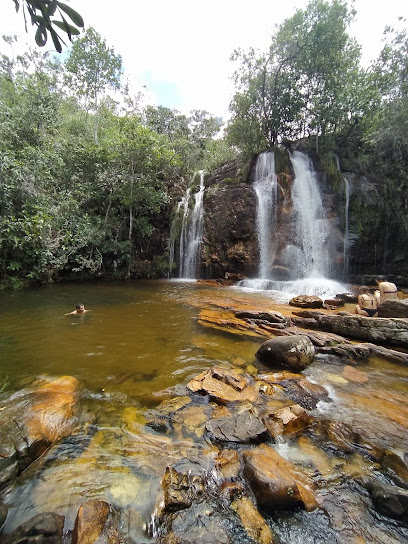
Cachoeira Almécegas I
Explore the breathtaking Cachoeira Almécegas I, a stunning waterfall in Brazil's Chapada dos Veadeiros National Park, perfect for nature lovers and adventure seekers.
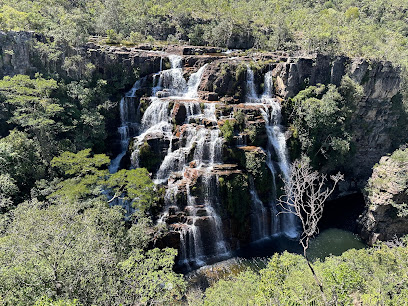
Capim de Cheiro
Explore Capim de Cheiro, a charming novelty store in Alto Paraíso de Goiás, showcasing aromatic treasures, handcrafted glassware, and local artistry.
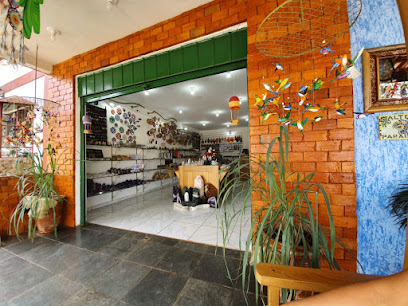
Café com Graça - Veadeiros
Discover the rich flavors of café culture at Café com Graça in Alto Paraíso de Goiás, where coffee meets tradition and warmth.
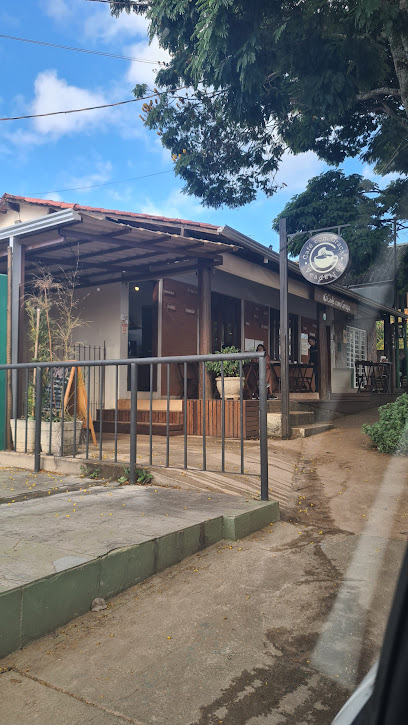
Aldeia Multiétnica
Discover the vibrant cultural heritage and serene natural beauty of Aldeia Multiétnica in Alto Paraíso de Goiás, a unique destination for all travelers.

Apiário Coracão do Cerrado
Explore the enchanting world of beekeeping at Apiário Coração do Cerrado, where nature's sweetness awaits in every drop of honey.
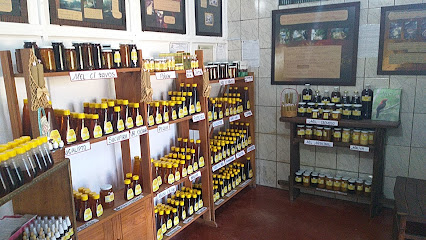
Loja Cheiro de Mato Chapada dos Veadeiros
Explore Loja Cheiro de Mato in Chapada dos Veadeiros for unique souvenirs, beach clothing, and sportswear that capture the vibrant Brazilian spirit.
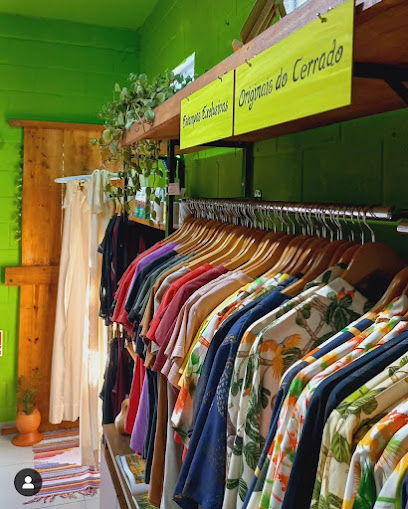
Abduzidos na Chapada
Discover unique local crafts and authentic souvenirs at Abduzidos na Chapada, a charming store nestled in the heart of breathtaking landscapes.
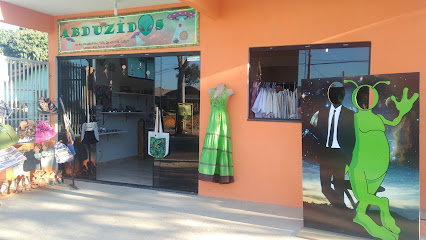
Herbário Tom das Ervas
Discover the aromatic world of herbs at Herbário Tom das Ervas in Alto Paraíso de Goiás, a unique shop for natural wellness and herbal remedies.
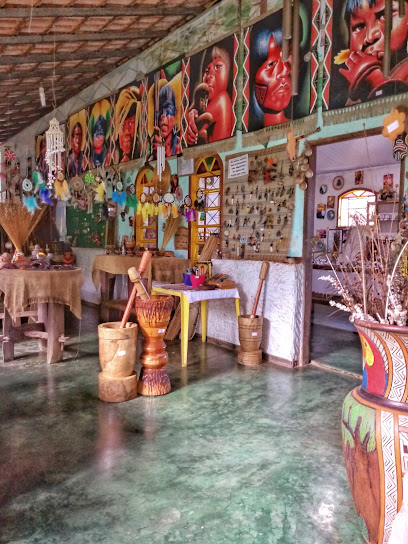
Natural do Paraíso Empório Gourmet
Explore the best of organic and gourmet foods at Natural do Paraíso Empório Gourmet, where health meets flavor in Alto Paraíso de Goiás.
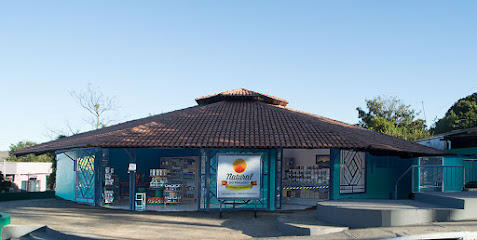
Casa das Latas Alto Paraíso
Discover a world of sweetness at Casa das Latas, Alto Paraíso de Goiás, where local confectionery delights await every visitor.

Loja Caliandra Moda Íntima e Sex Shop
Loja Caliandra: Your go-to destination for intimate apparel and unique adult novelties in Alto Paraíso de Goiás.

Essential bars & hidden hideouts
Vendinha 1961
Discover the vibrant flavors of Brazil at Vendinha 1961, a top bar and restaurant in Alto Paraíso with delicious pastéis and friendly service.
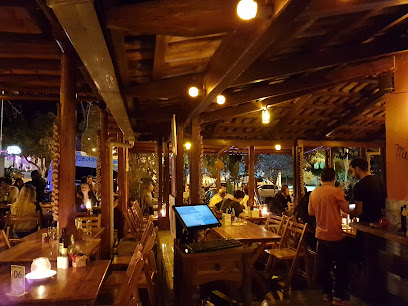
Bar do Mirante
Discover the enchanting sunset views and vibrant cocktail creations at Bar do Mirante in Alto Paraíso de Goiás, a must-visit destination for tourists.
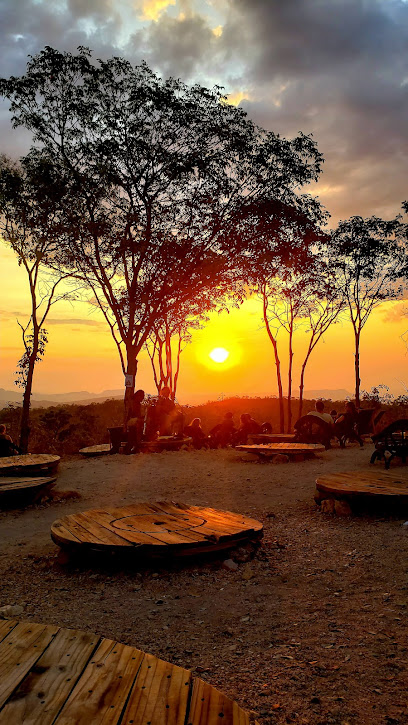
ALQUIMIA Culinária - Arte - Tabacaria
Discover a culinary and artistic oasis at ALQUIMIA Culinária, where vibrant flavors and captivating art come together in Alto Paraíso de Goiás.
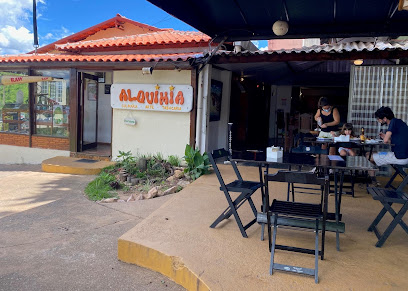
Gastrobar Área 51
Discover the vibrant flavors and lively ambiance of Gastrobar Área 51, a premier destination for culinary delights in Alto Paraíso de Goiás.
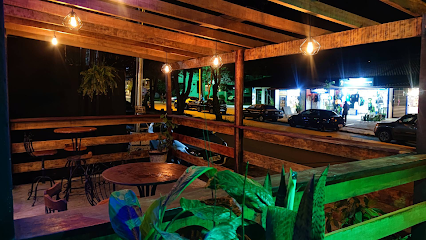
Bar do Pelé
Experience the vibrant atmosphere of Bar do Pelé in São Jorge - a perfect retreat for drinks, bites, and live music in the heart of nature.
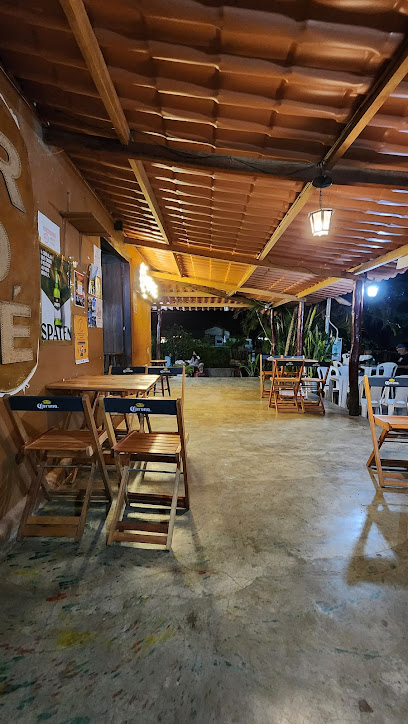
BarZen Chapada
Experience the vibrant flavors and inviting atmosphere at BarZen Chapada, a premier restaurant and cocktail bar in Alto Paraíso de Goiás.
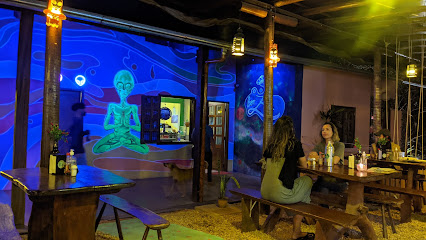
Na Varanda Sunset
Discover the breathtaking sunsets and vibrant atmosphere at Na Varanda, the ultimate bar experience in Alto Paraíso de Goiás.
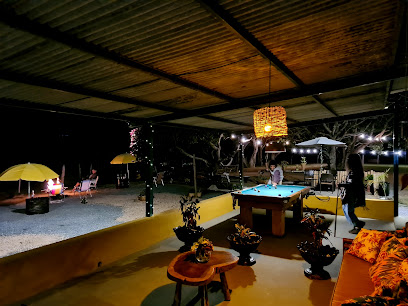
Empório Randevu | Gastrobar
Discover Empório Randevu, Alto Paraíso's vibrant gastrobar offering gourmet delights, artisanal coffee, and a lively atmosphere for all tastes.
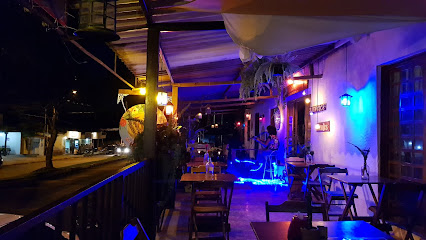
Sideral Burger
Experience the best of gourmet burgers in Alto Paraíso de Goiás at Sideral Burger, where local flavors meet cosmic culinary creativity.
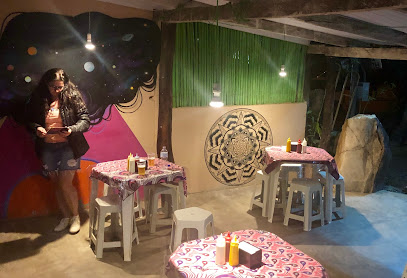
Na Villa
Experience the perfect blend of scenic beauty, delectable cuisine, and vibrant atmosphere at Na Villa, a must-visit bar and restaurant in São Jorge.
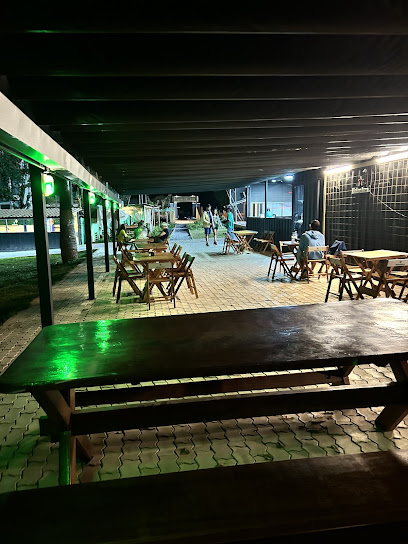
Telinus Night
Discover the vibrant nightlife at Telinus Night, the ultimate bar and nightclub experience in Alto Paraíso de Goiás, Brazil.
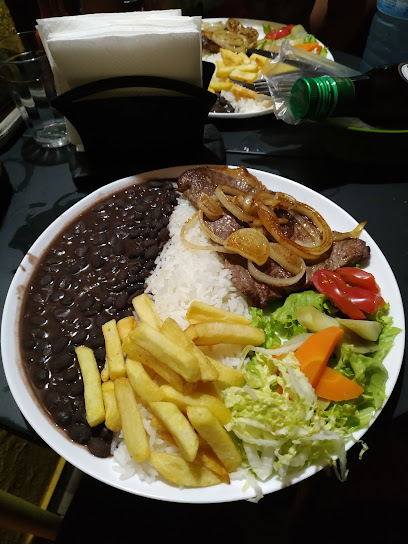
Canopus Bar e Petiscos
Experience the vibrant atmosphere and authentic flavors of Brazilian petiscos at Canopus Bar e Petiscos in Alto Paraíso de Goiás.

Clandestino SJ
Experience the vibrant nightlife and local culture at Clandestino SJ, a lively bar in Vila de São Jorge, Alto Paraíso de Goiás.
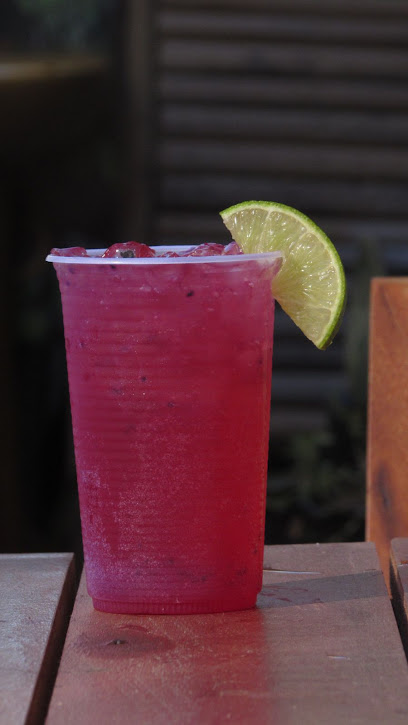
CASA AAMRELA ESPAÇO CULTURAL
Discover the vibrant fusion of cocktails, culture, and nightlife at CASA AAMRELA ESPAÇO CULTURAL in São Jorge, Alto Paraíso de Goiás.
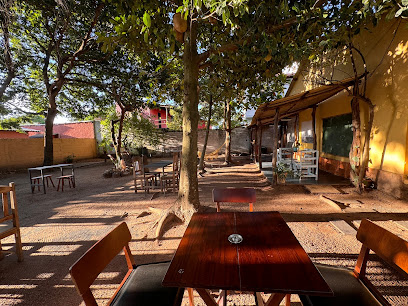
Bar E Conveniência Parada Obrigatória
Discover the vibrant spirit of Alto Paraíso at Bar E Conveniência Parada Obrigatória, where every drink tells a story and every moment is a celebration.
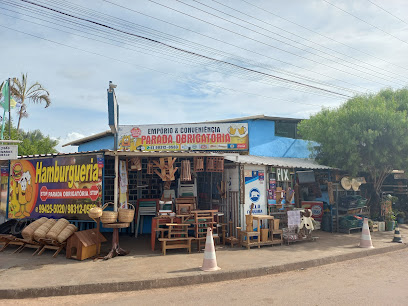
Local Phrases about Chapada dos Veadeiros National Park
-
- HelloOlá
[oh-lah] - GoodbyeAdeus
[ah-deh-oos] - YesSim
[seem] - NoNão
[naw] - Please/You're welcomePor favor/De nada
[por fah-vohr/deh nah-dah] - Thank youObrigado
[oh-bree-gah-doo] - Excuse me/SorryCom licença/Desculpe
[kohm lee-sen-sah/deh-skool-peh] - How are you?Como está?
[koh-moh eh-stah] - Fine. And you?Bem. E você?
[bane/eh voh-seh] - Do you speak English?Você fala inglês?
[voh-seh fah-lah een-glehsh] - I don't understandEu não entendo
[eh-oo now-en-ten-doo]
- HelloOlá
-
- I'd like to see the menu, pleaseEu gostaria de ver o cardápio, por favor
[eh-oo goh-stah-ree-ah deh vehr oo kahr-dah-pyoo/por fah-vohr] - I don't eat meatEu não como carne
[eh-oo now koh-moo kahr-neh] - Cheers!Saúde!
[sah-oo-deh] - I would like to pay, pleaseEu gostaria de pagar, por favor
[eh-oo goh-stah-ree-ah deh pah-gahr/por fah-vohr]
- I'd like to see the menu, pleaseEu gostaria de ver o cardápio, por favor
-
- Help!Socorro!
[soh-koh-roh] - Go away!Vá embora!
[vah ehm-boh-rah] - Call the Police!Chame a Polícia!
[shah-meh ah poh-lee-see-ah] - Call a doctor!Chame um médico!
[shah-meh oom meh-dee-koh] - I'm lostEstou perdido
[eh-stoh pehr-dee-doo] - I'm illEstou doente
[eh-stoh doh-en-teh]
- Help!Socorro!
-
- I'd like to buy...Eu gostaria de comprar...
[eh-oo goh-stah-ree-ah deh kohm-prahr] - I'm just lookingEstou só olhando
[eh-stoh soh oh-lhahn-doo] - How much is it?Quanto custa?
[kwan-too koos-tah] - That's too expensiveIsso é muito caro
[ee-soh eh moo-ee-toh kah-roo] - Can you lower the price?Você pode baixar o preço?
[voh-seh poh-deh bah-ee-shahr oo preh-soh]
- I'd like to buy...Eu gostaria de comprar...
-
- What time is it?Que horas são?
[keh oh-rahz sah-ooh] - It's one o'clockÉ uma hora
[eh oo-mah oh-rah] - Half past (10)Meio-dia e meia
[may-oh-dee-ah eh may-ah] - MorningManhã
[mah-nyah] - AfternoonTarde
[tahr-deh] - EveningNoite
[noy-chee] - YesterdayOntem
[ohn-tehn] - TodayHoje
[oh-zheh] - TomorrowAmanhã
[ah-mahn-yah] - 1Um
[oom] - 2Dois
[doh-is] - 3Três
[trehs] - 4Quatro
[kwah-troh] - 5Cinco
[seen-koh] - 6Seis
[say-ees] - 7Sete
[set-eh] - 8Oito
[oy-toh] - 9Nove
[noh-veh] - 10Dez
[dehz]
- What time is it?Que horas são?
-
- Where's a/the...?Onde fica o/a...?
[ohn-deh fee-kah oo/ah] - What's the address?Qual é o endereço?
[kwahl eh oo ehn-deh-reh-soh] - Can you show me (on the map)?Você pode me mostrar (no mapa)?
[voh-seh poh-deh meh moh-strahr/noh mah-pah] - When's the next (bus)?Quando é o próximo (ônibus)?
[kwan-doh eh oo proh-ksee-moh/ohn-ee-boos] - A ticket (to ....)Um bilhete (para ....)
[oom beel-yeh-chee/pah-rah]
- Where's a/the...?Onde fica o/a...?
History of Chapada dos Veadeiros National Park
-
Long before the arrival of European settlers, the region now known as Chapada dos Veadeiros National Park was inhabited by various indigenous tribes. These early inhabitants were primarily hunter-gatherers who thrived in the diverse ecosystems of the Cerrado biome. Archaeological evidence, including pottery shards and ancient tools, points to their sophisticated understanding of the land and its resources.
-
In the early 18th century, the region drew attention due to its rich deposits of quartz crystals. Portuguese explorers and bandeirantes (frontiermen) ventured into the area in search of these precious stones. The crystals were not only valued for their beauty but also believed to possess mystical properties, drawing spiritual seekers and fortune hunters alike.
-
During the 18th century, the discovery of gold in the nearby region of Goiás led to a significant influx of settlers and miners. Although Chapada dos Veadeiros itself was not a primary gold mining site, it served as a crucial transit route for those traveling to and from the goldfields. This period saw the establishment of small settlements and the development of rudimentary infrastructure.
-
Chapada dos Veadeiros was officially designated as a national park on January 11, 1961, by President Juscelino Kubitschek. The park was created to protect the unique landscapes, flora, and fauna of the Cerrado biome, one of the world's most biodiverse savannahs. Over the years, the park's boundaries have been expanded to cover over 240,000 hectares, ensuring the conservation of its natural beauty and ecological significance.
-
In 2001, Chapada dos Veadeiros National Park, along with the nearby Emas National Park, was designated a UNESCO World Heritage Site. This recognition was granted due to the park's exceptional biodiversity and the presence of numerous endangered species. The UNESCO status has helped raise global awareness about the importance of preserving this unique ecosystem.
-
The region surrounding Chapada dos Veadeiros has long been a site of spiritual significance. Local communities, including descendants of indigenous peoples and Afro-Brazilian quilombolas, maintain rich cultural traditions and practices. The area is also a popular destination for spiritual retreats and alternative healing practices, attracting visitors from around the world seeking connection with nature and inner peace.
-
In recent years, Chapada dos Veadeiros National Park has become a focal point for conservation efforts aimed at protecting the Cerrado biome. Environmental organizations, government agencies, and local communities collaborate to address threats such as deforestation, wildfires, and illegal mining. These efforts include reforestation projects, wildlife monitoring programs, and educational initiatives to promote sustainable tourism.
Chapada dos Veadeiros National Park Essentials
-
Chapada dos Veadeiros National Park is located in the state of Goiás, Brazil. The nearest major city is Brasília, which is about 230 kilometers away. From Brasília, you can take a bus or rent a car to reach the park. The journey by road typically takes around 3 to 4 hours. There are also private shuttle services that operate between Brasília and the park, providing a convenient and comfortable option for travelers.
-
Within the park, the primary mode of transportation is hiking. The park has a network of well-marked trails that connect various attractions. For those looking to explore the surrounding areas, renting a car is highly recommended. Local taxis and shuttle services are also available for shorter trips. Keep in mind that public transportation options are limited, so planning your travel in advance is advisable.
-
The official currency in Brazil is the Brazilian Real (BRL). Credit cards are widely accepted in hotels, restaurants, and larger shops in the nearby towns of Alto Paraíso de Goiás and São Jorge. However, it is advisable to carry cash, especially for smaller establishments and within the park itself. ATMs are available in Alto Paraíso de Goiás, but they may not always be reliable, so it's wise to withdraw sufficient cash before heading to the park.
-
Chapada dos Veadeiros National Park is generally a safe destination for tourists. However, it is essential to take standard precautions. Avoid walking alone at night in unfamiliar areas and keep an eye on your belongings in crowded places. While the park itself is safe, the nearby towns of Alto Paraíso de Goiás and São Jorge have areas where petty crime can occur. Always stay vigilant and aware of your surroundings.
-
In case of emergency, dial 190 for police assistance and 192 for medical emergencies. The nearest hospital is located in Alto Paraíso de Goiás, which is about 36 kilometers from the park entrance. It is highly recommended to have travel insurance that covers medical emergencies. There are also pharmacies in the nearby towns where you can purchase over-the-counter medications for minor health issues.
-
Fashion: Do wear comfortable and practical clothing suitable for hiking. Avoid wearing flip-flops or sandals on the trails. Religion: Do respect local customs and traditions. While there are no specific religious dress codes, modest clothing is always appreciated. Public Transport: Do plan your transportation in advance as public transport is limited. Don't expect frequent bus services. Greetings: Do greet people with a friendly 'Olá' (Hello) or 'Bom dia' (Good morning). A handshake is also common. Eating & Drinking: Do try local delicacies and accept food offerings graciously. Don't waste food, as it is considered impolite.
-
To experience Chapada dos Veadeiros National Park like a local, visit the towns of Alto Paraíso de Goiás and São Jorge. Engage with the local community, as they are often friendly and willing to share stories about the region's history and culture. Don't miss exploring lesser-known trails and waterfalls that offer a more secluded and intimate experience. Additionally, try to visit during the dry season (May to September) for the best hiking conditions and breathtaking views.
Nearby Cities to Chapada dos Veadeiros National Park
-
Things To Do in Salvador
-
Things To Do in São Paulo
-
Things To Do in Rio de Janeiro
-
Things To Do in Hernandarias
-
Things To Do in Foz do Iguaçu
-
Things To Do in Puerto Iguazú
-
Things To Do in Florianópolis
-
Things To Do in Fortaleza
-
Things To Do in Recife
-
Things To Do in Villarrica
-
Things To Do in San Bernardino
-
Things To Do in Aregua
-
Things To Do in Ypacarai
-
Things To Do in Asuncion
-
Things To Do in Encarnacion










